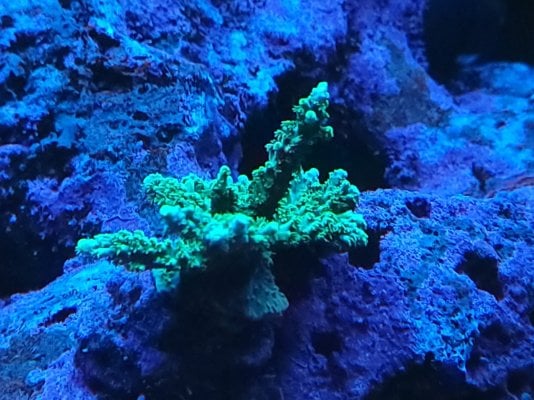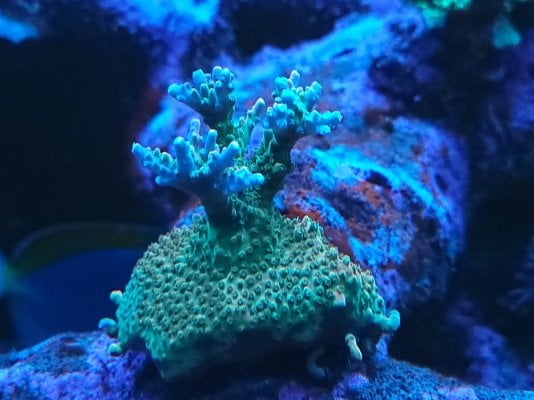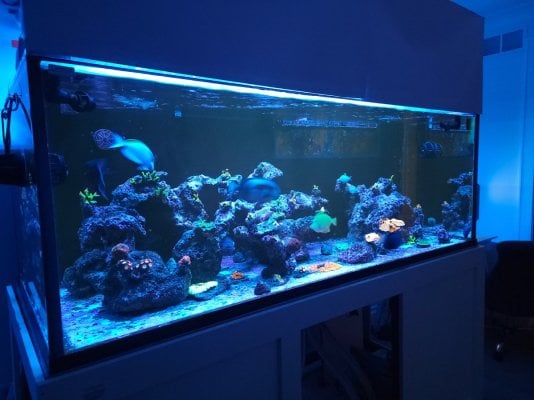This will be an interesting experiment. We know that a sandbed across the bottom of a tank is sufficient keep no3 near zero. What we do not know is if that area is 1% populated with anoxic bacteria, or if it is saturated. I also think that the sandbed will make a difference once it gets established, but I have no idea if it will slow the rise, arrest the rise, start to decline or decline fast.
I tested the water today (after adding the sandbed) and the purple on the salifert seems much darker than it did on the last test 2 days ago. I wouldnt be surprised if there was some die off on this ocean direct sand or maybe its just false reading - I rinsed the sand good with about 30 gallons of saltwater but hoping it was in fact alive and not exposed to these cold northeast temperatures.You can start a tank with dry everything and eventually get bacteria and some algae out of nowhere... enough to add a fish which can bring everything else. It just happens from the air, your breath or where ever. Just water in a jug with circulation and some light will start an ecosystem of some sort.
It can take months for anoxic bacteria to develop, so have some patience.
What did you no3 end up at with all of the water changes?
























